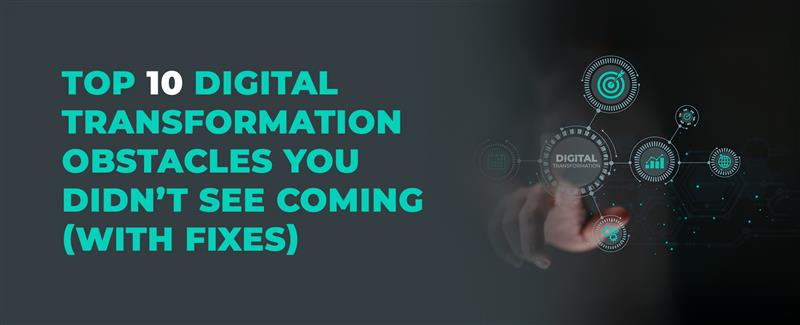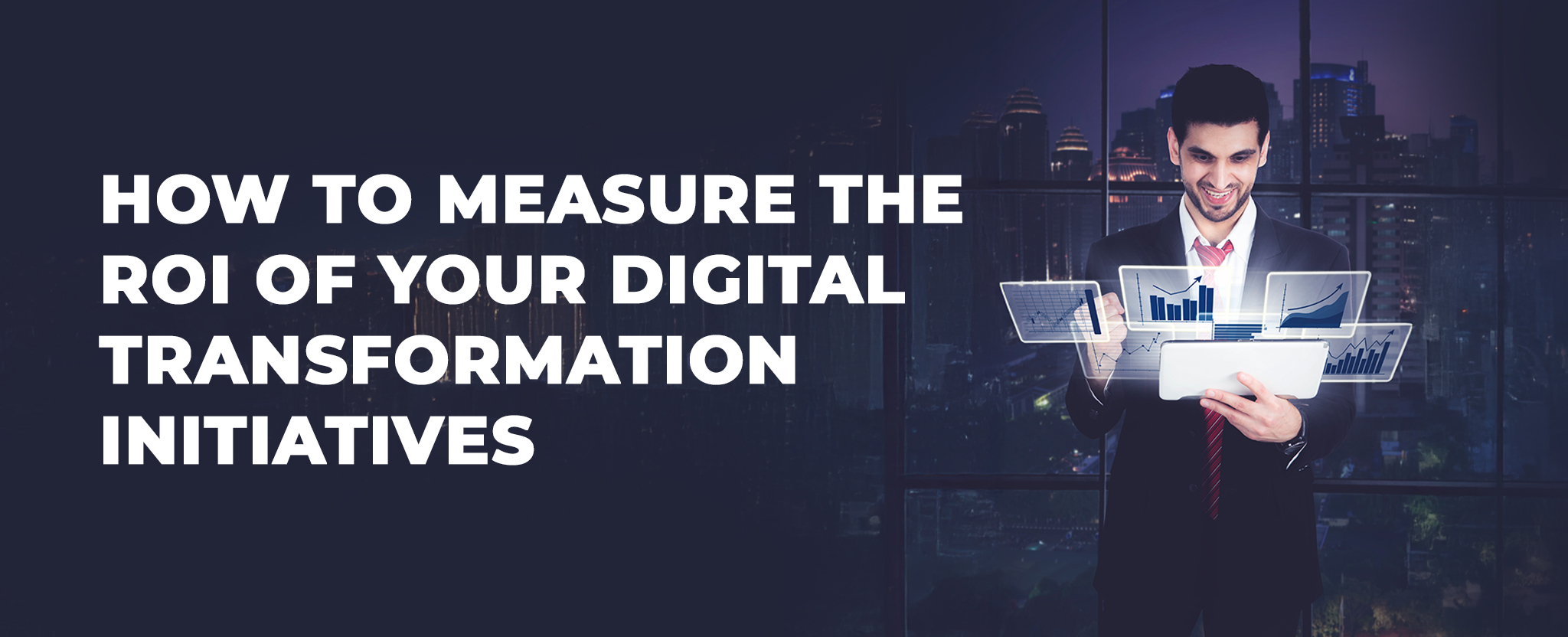The 10 Most Effective Digital Transformation Models Driving Business Success
4 Apr 25 


Key Takeaways:
- Digital transformation models provide structured frameworks to navigate the complex transition from traditional to digital business operations
- Selecting the right model depends on your organization’s goals, industry requirements, and digital maturity
- Successful transformation requires more than technology adoption—it demands cultural shifts and strategic alignment
- A phased approach with clear metrics delivers better results than rushed implementation
Did you know that organizations with a clear digital transformation strategy are 26% more profitable than their industry peers? Yet, despite investing heavily in new technologies, 70% of digital transformation initiatives fail to reach their stated goals. The difference between success and failure often lies not in the technologies adopted, but in the transformation model that guides implementation.
Understanding Digital Transformation Models
A digital transformation model provides organizations with a structured framework to integrate digital technologies across all business areas. These models offer systematic approaches to reimagine business processes, customer experiences, and operational models in the digital age.
Unlike simple technology upgrades, comprehensive transformation models address the full spectrum of organizational change—from technology infrastructure and data management to workplace culture and talent development. By following a well-defined model, businesses can navigate the complexities of digital transformation with greater confidence and clarity.
Why Digital Transformation Models Matter
The global digital transformation market is projected to reach $3.9 trillion by 2027, demonstrating the massive investment organizations are making in their digital futures. However, without a strategic model to guide implementation, these investments often yield disappointing results.
Effective transformation models break complex changes into manageable components, creating clear roadmaps for implementation. They help organizations prioritize initiatives, allocate resources efficiently, and measure progress against defined benchmarks. Most importantly, they align digital investments with strategic business objectives, ensuring technology serves business goals rather than driving them.
The 10 Most Effective Digital Transformation Models
1. Comprehensive Horizon-Focused Model
This forward-looking approach divides transformation into three distinct horizons, each representing a different stage of evolution:
- Horizon 1: Focuses on optimizing existing processes and technologies, creating efficiencies within current business models
- Horizon 2: Explores adjacent opportunities and new technology-driven initiatives that extend the core business
- Horizon 3: Pursues transformative innovations that could fundamentally reshape the business or industry
This model allows organizations to balance immediate improvements with long-term innovation, creating a sustainable path to digital maturity. Companies like Microsoft have effectively used this approach, improving core products (Horizon 1) while developing cloud services (Horizon 2) and investing in emerging technologies like AI and quantum computing (Horizon 3).
Also read What are the Strategies to Enhance Digital Transformation?
2. Robust Capability Maturity Framework (CMF)
The CMF approach assesses and enhances digital capabilities across distinct maturity levels. By evaluating key areas like technology adoption, data management, and operational processes, this model provides insights into where businesses should focus transformation efforts.
Organizations using CMF typically progress through five maturity levels:
- Level 1 – Initial: Basic digital capabilities with limited integration
- Level 2 – Managed: Standardized processes with some digital elements
- Level 3 – Defined: Well-documented digital processes across multiple areas
- Level 4 – Quantitatively Managed: Data-driven optimization of digital capabilities
- Level 5 – Optimizing: Continuous innovation and adaptation of digital capabilities
This structured assessment helps organizations identify capability gaps and create targeted improvement plans. IBM’s implementation of CMF has enabled them to systematically enhance their digital capabilities while maintaining operational stability.
3. Structured Staged Roadmap Model
This step-by-step approach breaks transformation into clear sequential stages:
- Initiation: Developing digital vision and strategy
- Selection: Choosing appropriate technologies and partners
- Investment: Securing funding and establishing support structures
- Implementation: Deploying technologies and training teams
- Optimization: Refining processes based on performance data
- Scaling: Expanding successful initiatives across the organization
The staged approach reduces risk by validating results at each phase before moving forward. This methodical progression ensures that foundations are solid before building more advanced capabilities.
4. Strategic Business Architecture Framework Model
This model aligns digital initiatives with organizational structure and business objectives. By mapping digital capabilities to business architecture, organizations ensure that transformation efforts enhance operational efficiency and support strategic goals.
The framework typically includes:
- Business capability mapping: Identifying core organizational capabilities
- Technology architecture alignment: Ensuring systems support business needs
- Process optimization: Redesigning workflows for digital efficiency
- Data architecture: Creating coherent data models across the organization
Companies implementing this model avoid the pitfall of disconnected digital initiatives by ensuring all technology investments serve a clear business purpose within the overall architecture.
5. Detailed Taxonomy-Focused Model
This approach creates a structured classification system for organizing different aspects of digital transformation. By categorizing transformation elements—such as digital capabilities, technology infrastructure, employee skills, and customer experience—organizations can assess each area independently and develop targeted strategies.
The taxonomy model enables:
- Precise assessment of current capabilities
- Clear prioritization of transformation initiatives
- Effective resource allocation to high-impact areas
- Detailed tracking of progress in specific categories
This granular approach is particularly effective for large organizations with complex operations spanning multiple divisions or business units.
6. Foundational Strategic Pillars Model
This model identifies core strategic pillars that support successful digital transformation:
- Customer Experience: Reimagining customer interactions across all touchpoints
- Operational Excellence: Streamlining processes through automation and data analytics
- Business Model Innovation: Creating new revenue streams and value propositions
- Cultural Transformation: Fostering a digital-first mindset throughout the organization
- Data Utilization: Leveraging data as a strategic asset for decision-making
Organizations focus on developing capabilities across all pillars simultaneously, recognizing that transformation requires progress in multiple dimensions. This balanced approach ensures that technology adoption aligns with cultural shifts and business model evolution.
7. Adaptive Life Cycle Evolution Model
Unlike one-time transformation initiatives, this model views digital transformation as an ongoing evolutionary process. Organizations continuously adapt to changes in technology, market dynamics, and customer expectations through iterative development cycles.
Key elements include:
- Continuous environmental scanning to identify emerging technologies
- Regular reassessment of digital strategy against market changes
- Incremental capability development through rapid learning cycles
- Flexible resource allocation to respond to new opportunities
This evolutionary approach helps organizations maintain digital relevance in rapidly changing environments. Companies like Amazon exemplify this model, continuously evolving their digital capabilities to meet emerging customer needs and market opportunities.
8. Flexible Component Framework Model
This modular approach breaks transformation into manageable components that can be implemented independently. Rather than attempting comprehensive change all at once, organizations focus on specific modules—such as customer engagement, operational automation, or data analytics—based on strategic priorities.
The component framework enables:
- Targeted implementation based on business needs
- Reduced complexity through focused initiatives
- Faster realization of benefits from high-priority components
- Greater adaptability as business requirements evolve
This approach is particularly effective for mid-sized organizations with limited resources for transformation initiatives.
Also read Digital Transformation in the Banking Industry
9. High-End Innovation-Based Model
This model places innovation at the center of transformation efforts, focusing on exploring emerging technologies that can disrupt existing business models and create new value propositions.
Key characteristics include:
- Strong emphasis on emerging technologies like AI, blockchain, and IoT
- Dedicated innovation labs or digital incubators
- Partnerships with technology startups and research institutions
- Willingness to experiment with radical business model changes
Companies like Netflix exemplify this approach, continuously pushing technological boundaries to transform content delivery and production. By prioritizing innovation, these organizations often lead industry disruption rather than responding to it.
10. Dynamic Agile Iterations Model
This approach applies agile methodologies to digital transformation, emphasizing short development cycles, rapid feedback loops, and continuous adaptation. Rather than following rigid transformation plans, organizations implement changes incrementally, learning and adjusting as they progress.
Benefits include:
- Faster implementation of digital initiatives
- Early identification and correction of implementation issues
- Reduced risk through incremental deployment
- Greater stakeholder engagement through visible progress
Organizations like ING have successfully applied this model, reorganizing teams into cross-functional squads that deliver continuous improvements to digital capabilities.
You may read Unlocking the Potential of Digital Transformation: Why and How it Matters?
Selecting the Right Digital Transformation Model
Choosing the appropriate transformation model requires careful consideration of several factors:
Strategic Alignment
The selected model must support your organization’s strategic goals and vision. A clear understanding of business objectives helps identify which transformation approach will best deliver desired outcomes.
Digital Maturity Assessment
Your organization’s current digital capabilities significantly influence which model will be most effective. Organizations with limited digital experience may benefit from structured approaches like the Staged Roadmap Model, while digitally mature organizations might leverage more innovative or agile approaches.
Industry Requirements
Different industries face unique regulatory, competitive, and technological challenges. Healthcare organizations, for instance, must balance innovation with strict compliance requirements, while retail businesses might prioritize customer experience transformation.
Resource Availability
Transformation requires significant investment in technology, talent, and organizational change. The chosen model must align with available resources and implementation capacity.
Risk Tolerance
More aggressive transformation models offer potential for breakthrough results but carry higher implementation risks. Organizations must balance transformation ambitions against their risk tolerance.
Implementing Digital Transformation Successfully
Regardless of the model selected, successful digital transformation requires:
- Clear leadership commitment: Visible support from executives throughout the transformation journey
- Employee engagement: Active involvement of staff in designing and implementing changes
- Measurable outcomes: Well-defined metrics to track transformation progress and impact
- Continuous learning: Mechanisms to capture insights and adjust approach based on implementation experience
- Technology-business alignment: Ensuring digital initiatives directly support business objectives
Final Thoughts
As digital technologies continue reshaping competitive landscapes across industries, effective transformation has become a strategic imperative. The right transformation model provides a structured framework for navigating this complex journey, helping organizations balance immediate improvements with long-term innovation.
By understanding these ten proven models and carefully selecting the approach that best fits their unique circumstances, organizations can dramatically improve their chances of transformation success. The most effective transformations go beyond technology implementation to fundamentally reimagine how businesses create and deliver value in the digital age.
Ready to Transform Your Business?
Mindster specializes in guiding organizations through successful digital transformations. With deep expertise across multiple transformation models and technologies, our team can help you select and implement the approach best suited to your unique business needs. Contact Mindster today to begin your transformation journey with confidence.
- Agentic AI1
- Android Development3
- Artificial Intelligence32
- Classified App3
- Custom App Development5
- Digital Transformation12
- Doctor Appointment Booking App14
- Dropshipping1
- Ecommerce Apps40
- Education Apps2
- Fintech-Apps37
- Fitness App4
- Flutter4
- Flutter Apps20
- Food Delivery App5
- Grocery App Development1
- Grocery Apps3
- Health Care10
- IoT2
- Loyalty Programs9
- Matrimony Apps1
- Microsoft1
- Mobile App Maintenance2
- Mobile Apps128
- Product Engineering6
- Progressive Web Apps1
- React Native Apps2
- Saas Application2
- Shopify9
- Software Development3
- Taxi Booking Apps7
- Truck Booking App5
- UI UX Design8
- Uncategorized6
- Web App Development1



















Comments